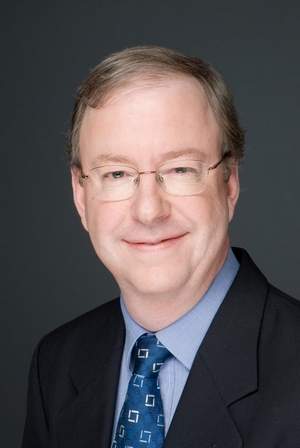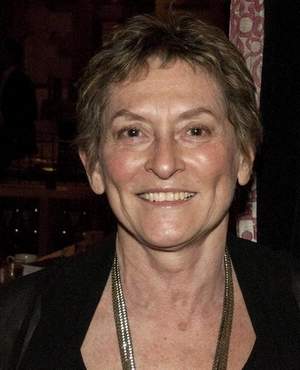Op-Ed: Banned Books Week Helps Fight for Free Speech
The following op-ed originally appeared in the Forum Section of the September 23, 2012 edition of Louisville, Kentucky’s The Courier-Journal.
By Christopher M. Finan and Joan E. Bertin
There has always been censorship in the United States.
This shocks most Americans, who rightly believe that the Bill of Rights promises us free speech. But the First Amendment did not prevent the federalists from throwing newspaper editors in jail. Abolitionist speakers were attacked by pro-slavery mobs. Industrialists broke up union meetings and used injunctions to ban picketing.
 |
|
Chris Finan |
Book censorship has been a threat to American culture since the 1920s, when publishers and booksellers were prosecuted for selling Ulysses and Lady Chatterley’s Lover. Although the Supreme Court finally gave adults the right to read what they want in the 1960s, the battle over books continues today. It is the reason that librarians, booksellers, publishers and authors launched Banned Books Week in 1982. A national celebration of the freedom to read, Banned Books Week, will be held from September 30 to October 6.
Here are just a few of the book censorship battles so far this year:
-
In January, school officials walked into high school classrooms in Tucson, Arizona, and removed at least seven titles that the state superintendent of public instruction claimed “repeatedly reference white people as being ‘oppressors.’ ” According to the superintendent, the books, which were used in the Mexican-American studies program, violate a law the Arizona State Legislature recently enacted that bans schools from using any material that promotes “resentment toward a race or class of people.” The books were thrown into boxes marked “banned.”
-
In February, PayPal, the principal Internet payment processor, told online bookstores and distributors that it would stop doing business with them within days unless they removed all erotic books describing rape, incest and bestiality. More than 1,000 e-books were deleted from websites before protests forced PayPal to withdraw its threat.
- In the spring, several libraries refused to purchase the biggest publishing sensation in years, Fifty Shades of Grey, because it is “pornographic.” Free speech groups said that there was no justification for banning Fifty Shades of Grey, particularly when some of the same libraries already had many sexually explicit literary classics on their shelves, including the once notorious Fanny Hill and Tropic of Cancer.
 |
|
Joan Bertin |
Since the launch of Banned Books Week 30 years ago, more than 11,000 book challenges have been reported in public schools and libraries. Since many are never reported, the total is probably much higher. There were 326 in 2011. The list of the 10 most frequently challenged books last year includes the Hunger Games trilogy, Brave New World, and To Kill a Mockingbird.
People try to ban books for many reasons. The Harry Potter books were the most frequently challenged for several years because some people think they encourage belief in witchcraft and magic. Recently, there have been a growing number of complaints about books that “promote” homosexuality. And Tango Makes Three, a children’s picture book about two male penguins who raise a chick, topped the most challenged list from 2006 to 2008.
Most books are challenged because of sexual content, offensive language or violence. Some parents have reacted to the fact that books for young adults are increasingly realistic in their depiction of life.
A few critics agree that authors have gone too far. Meghan Cox Gurdon, the children’s book reviewer for the Wall Street Journal, has described contemporary young adult literature as “a hall of fun-house mirrors, constantly reflecting back hideously distorted portrayals of what life is ... (A) careless young reader — or one who seeks out depravity — will find himself surrounded by images not of joy or beauty but of damage, brutality, and losses of the most horrendous kind.”
The most articulate responses to this criticism have come from the authors of challenged books. Laurie Halse Anderson is the author of Speak, a young adult novel about the problem of sexual violence. Speak was denounced as “soft-core pornography” in Republic, Missouri, but was not removed. “Books don’t turn kids into murderers, or rapists, or alcoholics,” Anderson wrote in reply to Gurdon. “Books open hearts and minds, and help teenagers make sense of a dark and confusing world.”
Sherman Alexie, author of The Absolutely True Diary of a Part-Time Indian, which has been one of the most frequently challenged books for several years, also responded. “I write for teenagers because I vividly remember what it felt like to be a teen facing everyday and epic dangers,” he said. “I write to give them weapons — in the form of words and ideas — that will help them fight their monsters.”
Of course, the people who are attempting to ban books deny that they are engaged in censorship. The censors have always justified their efforts in terms of noble goals — protecting children and defending the right of parents to decide what their children should read.
No one disputes the right of parents to request an alternate assignment if they object to a book their child is asked to read. What is at issue is the freedom of the other children to read books that have been chosen for them by teachers and librarians who have applied professional criteria to select the best books.
Today’s censors are so insistent on the nobility of their cause that they even deny that their efforts result in any books being “banned.” They denounce Banned Books Week as a fraud because they believe a book isn’t banned if you can still get it at a library or bookstore.
While it is true that most challenged books are retained, many are not. The Texas ACLU, which has been documenting book banning in the state for 15 years, reports that 17 books were banned in Texas last year. A survey of book challenges in Missouri public schools since 2008 has established that 12 of the 53 challenged books were removed. Even when books are retained, teachers may be afraid to teach them, or others like them, for fear of setting off another controversy.
Things would certainly have been far worse if teachers, librarians, parents, students, and even some administrators hadn’t been fighting back. The National Coalition Against Censorship and the American Booksellers Foundation for Free Expression created the Kids’ Right to Read Project in 2007 to help them win these grass-roots battles.
We have made progress since the creation of Banned Books Week.
Today most libraries and school districts have a formal review process for handling complaints, which has helped reduce the number of book bans. Last year two school board members in Richland, Washington, who had voted to ban Absolutely True Diary of a Part-Time Indian reversed their votes after reading the book, returning it to the classroom. One of them promised that she would never vote on a book again without reading it first. The other recognized for the first time that basic rights were at stake. “When I’m voting a book out of the classroom, I’m denying parents the right to choose to have that book read by their students,” he said.
But efforts to censor books will probably never end. There will always be people trying to suppress the ideas they hate.
So the battle must continue: We possess free speech only as long as we are willing to fight for it.
Chris Finan is president of the American Booksellers Foundation for Free Expression. Joan Bertin is executive director of the National Coalition Against Censorship. The two groups are the co-founders of the Kids’ Right to Read Project.
©The Courier-Journal. Reprinted with permission.